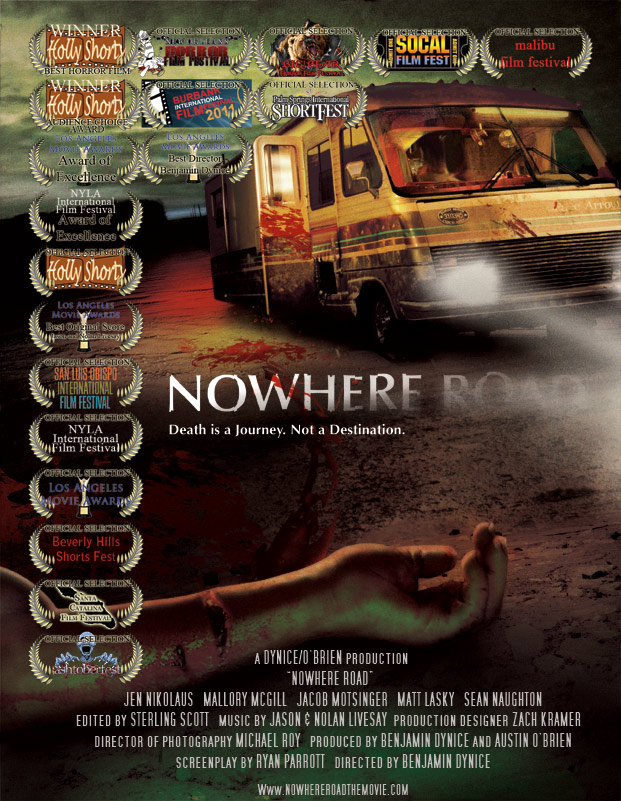
That focus works both for and against Road to NowHere as a documentary. “The film has the earnestness of the feel-good Cameron Crowe flick…” The technical and logistical challenges of doing that could potentially be worth documenting in and of themselves, but as the title’s distinctive capitalization suggests, the film is far more concerned with Fleig’s personal journey of self-actualization and discovering his place in the universe. Hardin, chronicles Fleig’s attempt to record songs for an upcoming album live, mostly outdoors, in several non-studio locations in his home state. Road to NowHere, co-directed by Fleig and his producer, Brian D. That sounds an awful lot like the logline of a Cameron Crowe movie – it’s easy to imagine a good-looking Chris Pine-type playing the lead, surrounded by a plethora of colorful down-home supporting characters providing comic relief and an emotional breakthrough or two – but as Hollywood as the setup might sound, it’s actually the basis for a documentary spotlighting singer/songwriter Jonathan Fleig. scene and returns to his hometown in Kansas, where he must come to terms with the death of his father and discover his true self in both an artistic and spiritual sense. That’s the only thing that interests me.”Īs he presents his latest film Road To Nowhere in Karlovy Vary, American cult director Monte Hellman (Two-Lane Blacktop) revealed that his plans for the film changed on the day he shot the final scene of the film.Feeling lost and down on his luck, a struggling musician gives up the glitzy, cutthroat L.A. Hellman said that Road To Nowhere, like his past films and hopefully his future films, is “about the difficulty of intimate relationships. The producer thinks I’m making an exploitation movie and in my mind I’m making Gone With The Wind.” Of his career, Hellman said: “I think what i’m trying to do usually is make what I think of as studio/Hollywood/A movies on a Z-movie budget. That’s how we have movies stars,” he said, adding, “Gary Cooper wasn’t making himself into someone else.” The actor shouldn’t become the character, the character has to become the actor. The California-based director also shared his unorthodox views on working with actors, saying “The only thing I ever told actors is don’t act. “I don’t regret it, I thought I was a really good editor, but she’s better,” Hellman said. He had his collaborator Celine Ameslon edit the film. But since the advent of computer editing I’m not so fast at that. “I used to be the fasted editor alive on an upright Moviola, I was usually standing with my foot on the pedal. Road To Nowhere, which premiered at Venice last year, marks the first of Hellman’s films that he hasn’t edited himself. Extraordinary things happened, the scripted morphed, it became something different, not in a deliberate way, in a subtle way.”


“Everyone who makes a film is a control freak, but for some reason this time I wanted everyone to participate in a collective subconscious experience and try to shut off our brains and let things happen. He said Road To Nowhere - a neo-noir about a film director and a mysterious young actress - was his most collaborative film yet, thanks the the trust from his cast of Shannyn Sossamon, Dominique Swain, Tygh Runyan, Waylon Payne and Cliff de Young. “I wanted to tell the audience, ‘this is not a music video, just relax and let this movie happen.’ This one shot has the sole purpose to tell everyone to slow down.” It appears in the finished film as a scene of about 5 minutes. One other change he made from the script of Road to Nowhere was shooting a 14-minute take of what was only one line in the script. “That radically changed the movie and it became a different kind of movie.”

That idea involved a photo of his lead actress taken two years before, which was Photoshopped and printed that day and became an image that was in the final shot of the film as well as the film’s poster. Hellman was speaking in a KVIFF masterclass supported by Screen and moderated by Vox Humana’s Gideon Bachmann.


 0 kommentar(er)
0 kommentar(er)
